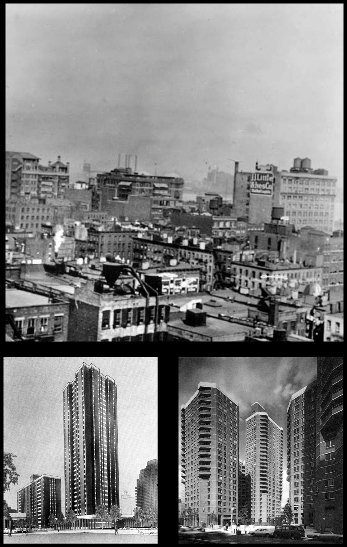

Following the condemnation of the area that became Kips Bay Plaza, New York City officials planned slum clearance for other parts of Rose Hill and Kips Bay. In 1959, the Housing and Redevelopment Board designated the area between 23rd and 30th Streets, First and Second Avenues for urban renewal. This was justified by the Board’s survey of the 2,224 individual apartment units in the seven-block area, which determined that 1,632 units were “dilapidated,” 289 “deteriorating” and only 303 “sound.” A 1961 plan for the area, the Bellevue South Urban Renewal Project, called for the retention of 40 buildings and the demolition of 213 structures in the seven-block area. Using funds provided under Title I of the federal Housing Act, these were to be replaced with seventeen high-rise apartment buildings providing 2,260 new apartments. Unlike the middle-income Kips Bay Plaza, these would be for both low- and middle-income tenants, although half the apartments would be reserved for employees of the Bellevue, NYU and Veterans Administration hospitals.
The seven blocks that made up the Bellevue South Urban Renewal Project contained 1,315 families and 821single person households for a total population of 6,215 people that would be displaced by the project. People who lived in this ethnically diverse area denied that they lived in a slum and wondered where they would go. Many had lived there most of their lives. The Bellevue South Preservation Committee was organized to fight the plan, arguing that residents would be "forced from decontrolled